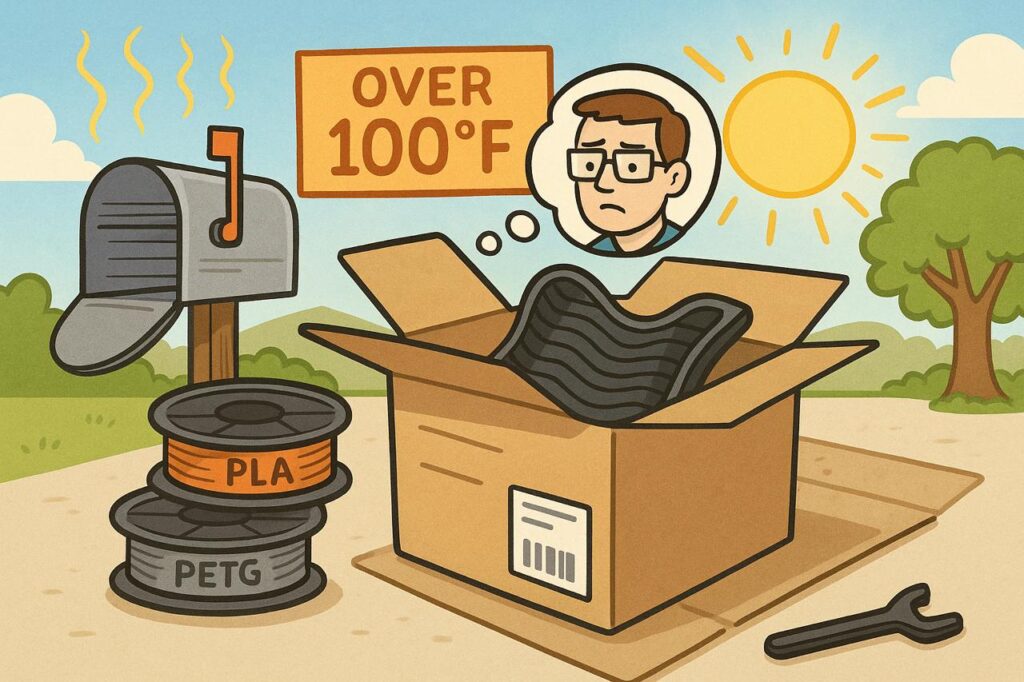Honey I melted my 3D print!
I recently mailed a small 3D-printed item—nothing fancy, just something I’d made many times before using PLA filament. A few days later, the recipient reached out with a picture: the item was warped, distorted just enough to be unusable. This was a first. I’ve shipped PLA prints before, even during the summer, without issue.
But this time, the destination was baking under triple-digit temperatures, and the package had likely spent hours in a sweltering metal mailbox or the back of a delivery truck. It turns out, that’s all it took to ruin the print.
That incident was a wake-up call—not just about shipping practices, but about filament choice.
PLA: The Hobbyist’s Go-To… With Limits
Polylactic Acid (PLA) is the most popular 3D printing filament for a reason. It’s affordable, easy to print, doesn’t require a heated enclosure, and produces clean results. But its low melting point—typically around 60°C (140°F) for deformation—makes it vulnerable to heat. Add in its poor UV resistance, and PLA becomes a poor candidate for outdoor use or for anything exposed to sustained warmth.
Inside your home? Great. Inside a 120°F delivery truck? Not so much.
Beyond PLA: PETG, ABS, ASA, and the Heat Factor
After my warped delivery, I revisited my options.
The second most popular hobbyist filament is PETG (Polyethylene Terephthalate Glycol). It’s UV resistant, more flexible than PLA (so it bends rather than cracks under stress), and handles heat better—around 80–90°C before deforming. It prints slightly trickier than PLA, but the trade-off in durability is often worth it.
Then there’s ABS (Acrylonitrile Butadiene Styrene), a tough industrial plastic used in everything from LEGOs to car parts. It’s stronger, more heat-resistant, and widely used in commercial applications—but it releases fumes during printing and is prone to warping unless you use an enclosed printer.
ASA (Acrylonitrile Styrene Acrylate) is a newer alternative to ABS. It prints similarly, offers excellent UV resistance, and warps less, but it’s still more demanding than PLA or PETG and also benefits from an enclosure.
Each filament comes with trade-offs in cost, print difficulty, strength, and environmental resistance. Choosing the right one depends entirely on the intended use case.
Lesson Learned: Match the Filament to the Real World
That warped item taught me a simple but critical lesson: print for the conditions the object will face, not just for ease of printing. PLA is still great—for objects that stay indoors, out of direct sun, and away from heat. (I’m literally typing this on a keyboard inside a PLA-printed case.)
But if you’re shipping something across the country in August, or building something that lives outdoors, it’s time to consider PETG, ASA, or another more rugged alternative.
I’ll still use PLA—it’s too convenient to ignore and offers much more color variety. But for prints that leave the comfort of climate control, I’m rethinking my defaults.
Because a warped print isn’t just frustrating—it’s a waste of time, material, and the chance to make something truly useful.

